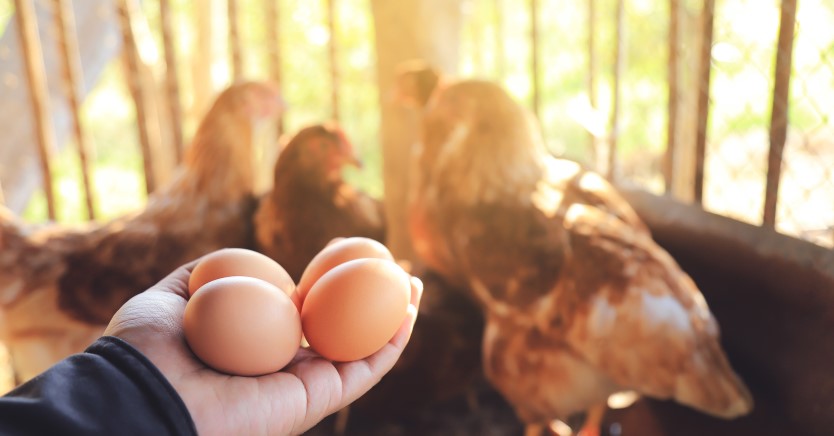An Overweight Bird is Unhealthy
Obesity is unhealthy in any living creature and birds are no exception.

Nature has taken special measures to control the number of calories birds ingest so that obesity does not jeopardize the ability to fly. Three million years of evolutionary design went into designing an efficient flying animal, and nature won't allow a build-up of fat to sabotage her efforts. With all this emphasis on lightness, birds need to live in a healthy environment which allows the bird to consume only the amounts of energy needed for normal body functions.
Logically, overweight birds can not fly sufficiently well to survive the rigors of the wild. Even though domestic birds don't require flight to find their food and maintain their diet, it is still vitally important to make sure they don't overeat, as the added weight compounded with greatly restricted exercise because they do not have room to stretch their wings, can be dangerous to their health.
A bird's brain automatically signals hunger. It calculates accurately the needs of the animal depending upon size, activity, environmental temperature, growth and reproductive state, and also signals when these energy requirements have been satisfied. The volume of food eaten would depend upon its caloric content. A high caloric diet would satisfy birds' needs relatively fast and cause them to eat less, and a low caloric diet would not satisfy the caloric needs as easily and would cause birds to eat a greater volume of food. The system protects in both directions-it keeps birds from becoming obese and it also drives birds to eat to satisfy their caloric requirements.
When birds become adults, their bodies maintain the proper weight for flying their entire life, with only small seasonal fluctuations. In a sense, birds are guaranteed a perfect figure. Well, how is it that some birds get fat? Although this statement may seem contradictory, about the only situation that allows birds to become fat is malnutrition. To override the important weight control mechanism requires a serious problem, and when billions of body cells are missing certain nutrients, a craving develops which causes overeating. Birds crave for proper nutrition, and in their attempts to survive, they may overeat. The deficient body cannot rid itself of the extra calories and is forced to store them as fat.
Almost all fat birds can be considered suffering from malnutrition. Many of these birds also have fatty deposits in the liver, creating serious liver function problems. Reducing fat birds, then, should be a matter of a diet correction. If these birds are changed to a balanced diet, the weight reduction will come automatically. An exception to the rule of weight control in birds has been birds who have become so humanized that they "pig-out'' just as people do. They eat people food, enjoy the taste and begin to eat like we do-from desire-not from hunger. These birds also return to normal weight without a reducing diet when fed a commercial balanced diet food.
Changes Seen in Older Birds:
- As birds age, a decrease in physical activities is usually
observed as energy levels go down.
- Conditions like arthritis may make certain movements
uncomfortable or painful.
- Watch for signs of limping.
- Senior birds may become more sedate and easy-going. Although some owners describe their pets to be feisty in old age, it is not the same as when they were younger.
Toys
Older birds that have not been exposed to any variety in their lives may originally be frightened by the introduction of toys. The best way to get around this is to do a very gradual introduction. The most important thing is to not give up. These older birds will benefit from environmental enrichment just as much as the babies. Older birds may be less tolerant of inexperienced people. Although the level of affection towards the family members remains the same, they are less likely to want to be with people they don't know.
Age-related Conditions:
- As birds get older, they may develop health problems. Certain
species are more prone to certain conditions, such as African
Greys being susceptible to atherosclerotic lesions inside of
blood vessels than other species.
- Arthritis - Birds may develop painful arthritis in their
joints.
- Older, overweight birds are more likely to develop problems
with blood glucose regulation. Diabetes needs to be carefully
managed by the bird owners and if this is done correctly, a bird
can live a long, good life.
- Older birds may develop a progressive opacity of the lens
(behind the iris). It may involve one or both eyes.
- Renal failure - This is one of the more common problems in
older birds. Increased water consumption and more urine in
droppings can be an indication that the kidneys aren't
functioning at optimal capacity.
- Diminished Immune Function - Older birds may be more susceptible to certain bacterial, fungal, protozoal and viral infections.
Tumors
Tumors can be benign or malignant (cancerous) and can involve any organ or system. Some species of birds tend to develop benign fatty tumors called "Lipomas." Lipomas are commonly seen in overweight Amazon Parrot, Rose-breasted Cockatoos and Budgies. It seems that older budgies are more prone to tumors of the ovary, testicle or kidney, which may eventually put pressure on the sciatic nerve on the affected side, resulting in lameness of the foot or leg. Fibromas are tumors found on the wing and they may need to be surgically removed. In some instances, amputation of the wing may be necessary. Heart failure:
Birds who are getting plenty of exercise (flying) are less prone to develop heart problems. However, birds who are mainly cage-bound and/or clipped can develop heart problems as they age.
How do I know if my bird is overweight?
Ask your avian veterinarian to show you the physical signs of obesity in your bird. Palpation of the bird can provide a lot of information about its physical status. Pectoral muscles (those on either side of the keel bone) can be easily palpated (felt) in an overweight bird, fat is stored in the area of the pectorals and, instead of the muscles being even with the keel bone, the tissue might bulge out on either side, resulting in “cleavage” that is palpable and often visible through the feathers. Fat can also be stored under the skin over most of the bird, and this is called general lipomatosis. This can usually be palpated and may be visualized by parting the feathers, as the fatty layer will be yellowish in color. Some overweight birds develop fatty tumors called lipomas, which can be seen and felt under the skin, most often over the abdomen, and sometimes in other areas, such as over the crop. Severely overweight birds can even develop fatty deposits around the cheeks. You can sometimes see that the feet even appear a bit fatter than normal bird feet.
Overweight birds might also develop xanthomas, which are fatty tumors that have a yellowish hue. The skin over xanthomas is often dimpled. These often occur on the wings. The skin over large lipomas or xanthomas can eventually ulcerate or become damaged due to trauma from being abraded or by the bird chewing the area. While there are published weight charts that provide normal weight ranges for specific pet bird species, there are always exceptions to every chart, as the bone structure, height and muscle tone of a bird should all be factored in when determining if a bird is of a healthy weight.
Another sign that a bird is overweight is the evidence of exercise intolerance. Overweight birds tend to be more sedentary and become easily winded with exercise or with mild exertion, such as during a wing-flapping exercise session . This can also be a sign of respiratory disease, so any wheezing or abnormal change to respiration should always be evaluated by an avian vet.
Ready to start saving money on pet wellness care?
Then take a look at Mint Wellness, the pet wellness plan that provides fast reimbursement on routine pet care. Save on vaccinations, wellness exams, preventatives, dental, and more!
Learn More


